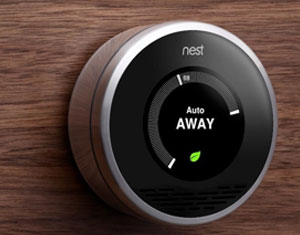 Where the Pi was the pioneer of very small Linux systems, the Arduino is, without question, the 800-pound gorilla in the micro-controller arena. The low-end models sport 14 digital input/output pins (six can be used for pulse-width-modulation outputs) and six analog inputs. Although you can interact with the Arduino through a serial interface and USB, there’s no built-in networking capability, much less Wi-Fi. With the tiny memory and 8-bit processor, the Arduino is meant to simply loop through and read the inputs, perhaps do some calculations, and set outputs -- very quickly. Don't look now, but over the past six months there's been a flurry of nano-Linux modules with an Arduino micro-controller bolted on the back. All have at least 100 Mbs Ethernet, and a few include Wi-Fi. These Frankenstein modules pick up where the Raspberry Pi and Arduino leave off.
Where the Pi was the pioneer of very small Linux systems, the Arduino is, without question, the 800-pound gorilla in the micro-controller arena. The low-end models sport 14 digital input/output pins (six can be used for pulse-width-modulation outputs) and six analog inputs. Although you can interact with the Arduino through a serial interface and USB, there’s no built-in networking capability, much less Wi-Fi. With the tiny memory and 8-bit processor, the Arduino is meant to simply loop through and read the inputs, perhaps do some calculations, and set outputs -- very quickly. Don't look now, but over the past six months there's been a flurry of nano-Linux modules with an Arduino micro-controller bolted on the back. All have at least 100 Mbs Ethernet, and a few include Wi-Fi. These Frankenstein modules pick up where the Raspberry Pi and Arduino leave off.
Cross Linux With an Arduino – What Will You Build?
You’ve undoubtedly witnessed the tremendous development in the nano-Linux niche lately. The Raspberry Pi jumpstarted the nano-Linux movement and has sold over 1.75 million units. It has various video capabilities, is programmed primarily in Python and has rudimentary input/output capabilities (digital input/output, but no analog to digital conversion) that allow simple interaction with the physical world. Although the Pi has a wired Ethernet connection, it lacks Wi-Fi. At about $35, it packs quite a bit of computing horsepower while still being pretty light on the old wallet. Its main purpose is to help people learn to program.  Where the Pi was the pioneer of very small Linux systems, the Arduino is, without question, the 800-pound gorilla in the micro-controller arena. The low-end models sport 14 digital input/output pins (six can be used for pulse-width-modulation outputs) and six analog inputs. Although you can interact with the Arduino through a serial interface and USB, there’s no built-in networking capability, much less Wi-Fi. With the tiny memory and 8-bit processor, the Arduino is meant to simply loop through and read the inputs, perhaps do some calculations, and set outputs -- very quickly. Don't look now, but over the past six months there's been a flurry of nano-Linux modules with an Arduino micro-controller bolted on the back. All have at least 100 Mbs Ethernet, and a few include Wi-Fi. These Frankenstein modules pick up where the Raspberry Pi and Arduino leave off.
Where the Pi was the pioneer of very small Linux systems, the Arduino is, without question, the 800-pound gorilla in the micro-controller arena. The low-end models sport 14 digital input/output pins (six can be used for pulse-width-modulation outputs) and six analog inputs. Although you can interact with the Arduino through a serial interface and USB, there’s no built-in networking capability, much less Wi-Fi. With the tiny memory and 8-bit processor, the Arduino is meant to simply loop through and read the inputs, perhaps do some calculations, and set outputs -- very quickly. Don't look now, but over the past six months there's been a flurry of nano-Linux modules with an Arduino micro-controller bolted on the back. All have at least 100 Mbs Ethernet, and a few include Wi-Fi. These Frankenstein modules pick up where the Raspberry Pi and Arduino leave off.
 Where the Pi was the pioneer of very small Linux systems, the Arduino is, without question, the 800-pound gorilla in the micro-controller arena. The low-end models sport 14 digital input/output pins (six can be used for pulse-width-modulation outputs) and six analog inputs. Although you can interact with the Arduino through a serial interface and USB, there’s no built-in networking capability, much less Wi-Fi. With the tiny memory and 8-bit processor, the Arduino is meant to simply loop through and read the inputs, perhaps do some calculations, and set outputs -- very quickly. Don't look now, but over the past six months there's been a flurry of nano-Linux modules with an Arduino micro-controller bolted on the back. All have at least 100 Mbs Ethernet, and a few include Wi-Fi. These Frankenstein modules pick up where the Raspberry Pi and Arduino leave off.
Where the Pi was the pioneer of very small Linux systems, the Arduino is, without question, the 800-pound gorilla in the micro-controller arena. The low-end models sport 14 digital input/output pins (six can be used for pulse-width-modulation outputs) and six analog inputs. Although you can interact with the Arduino through a serial interface and USB, there’s no built-in networking capability, much less Wi-Fi. With the tiny memory and 8-bit processor, the Arduino is meant to simply loop through and read the inputs, perhaps do some calculations, and set outputs -- very quickly. Don't look now, but over the past six months there's been a flurry of nano-Linux modules with an Arduino micro-controller bolted on the back. All have at least 100 Mbs Ethernet, and a few include Wi-Fi. These Frankenstein modules pick up where the Raspberry Pi and Arduino leave off.


